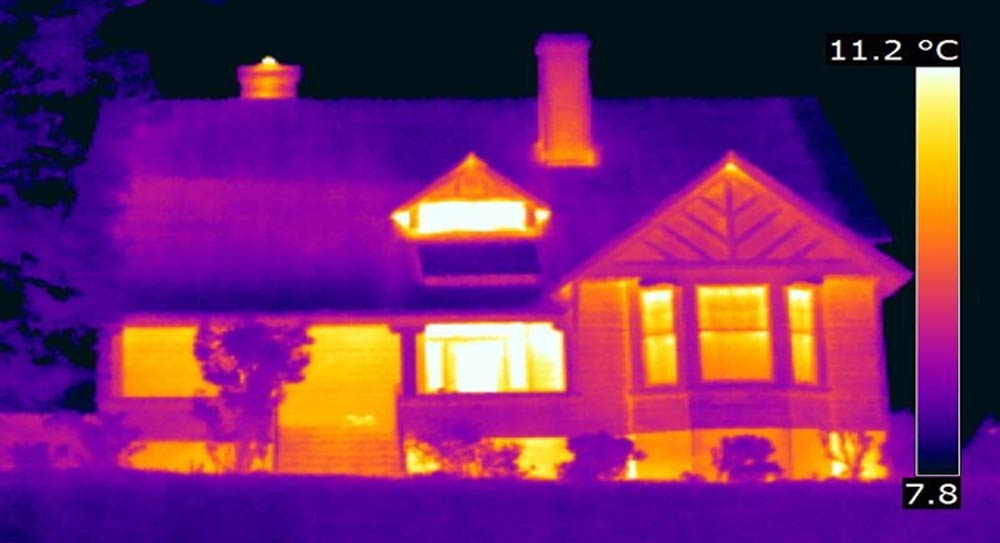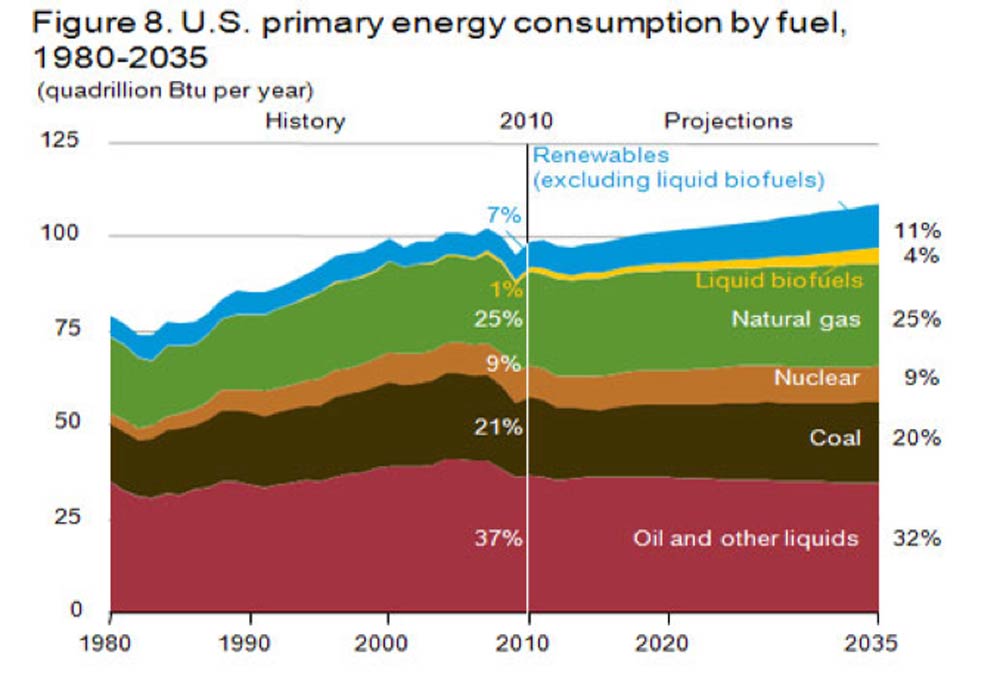Energy Asset
Most of America’s 135 million homes were built as permanent structures, with 44% constructed before 1970. Considering growth and construction trends, these homes are likely to remain occupied for 50 years or longer. Although ownership changes, residential buildings can be viewed as long-term energy customers with consumption dominated by energy for heating and cooling.
Most U.S. homes are framed with wood: the thermal barrier between inside and outside (thermal shell) is “weatherized” by insulation between exterior studs and around ceiling joist. Personal comfort is accepted as a basic necessity, an unavoidable cost of living. Once the thermostat is set, few people give much thought to their mechanical system or the leakage of conditioned air that profoundly affects their energy bill.

Infra-red photo
The 1980 USDOE report, “Low Energy Futures for the United States” (DOE/PE-0020), didn’t mention weatherization when describing a future in which efficiency offsets demand growth. Rather, the report states: “improved design and construction incorporating passive solar, super-insulation, and double envelope construction can greatly reduce energy requirements” (page 25). Unfortunately, thermal design evolves slowly, and EIA expects continued demand growth:

According to trends described in the Guardian (12/11/17), EIA projections may be too low in our digital future. “U.S. researchers expect power consumption to triple in the next five years as one billion more people come online in developing countries, and the “internet of things” (IoT), driverless cars, robots, video surveillance and artificial intelligence grows exponentially in rich countries.”
Alternative currencies have recently emerged as another unplanned burden for the future grid. The Washington Post(2/13/18) reported that each “transaction involves an immense number of mathematical calculations, which in turn occupy vast computer server capacity. And that requires a lot of electricity.” The result is that “cryptocurrency mining in Iceland is using so much energy, the electricity may run out for the first time, they now exceed Icelanders’ own private energy consumption.”
The Energy Times (1/22/18) also pointed to the staggering energy requirement of alternative currencies: “The total network of computers plugged into the Bitcoin network consumes as much energy each day as some medium-size countries, and the network supporting Ethereum, the second-most valuable virtual currency, gobbles up another country’s worth of electricity each day.”
…click on the above link to read the rest of the article…